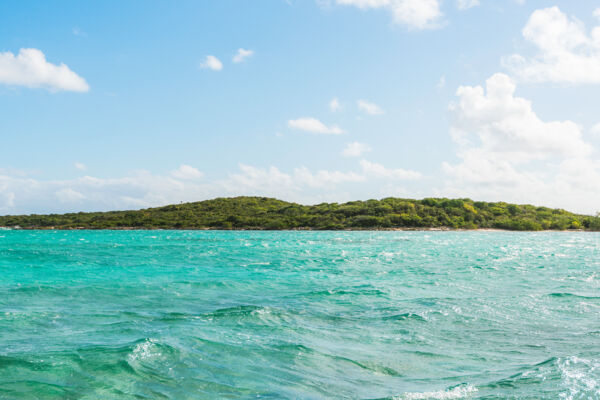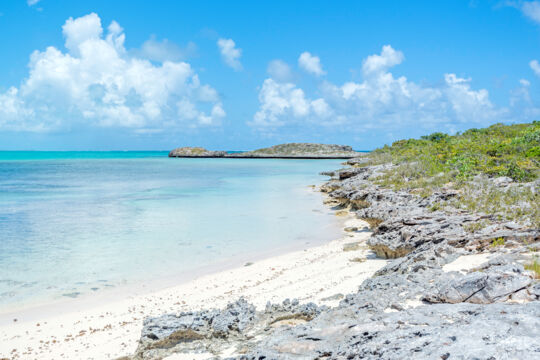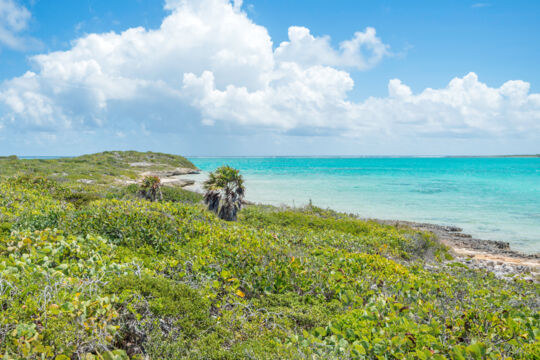Iguana Cay
Turks and CaicosIguana Cay is a small uninhabited island, and is located in Jackson Cut Bay, which is between East Caicos and Joe Grant Cay. This cay should not be confused with the iguana sanctuary of Little Water Cay, which is often incorrectly referred to as Iguana Cay.
Like many of the islands in the Turks and Caicos located near the barrier reef, much of the Iguana Cay coastline consists of limestone ironshore, which is often exhibits sharp and intricate surface formations. A small peninsula beach leads off the southern point of the cay, yet sands do shift in the area, so the sand bar isn’t always present. The interior of the cay supports low coastal vegetation, and few trees of any height. The collective area of the cay is about 15 acres (6 hectares). Close of the west side of the cay are the Iguana Cay Rocks, which are three small standalone rocks.
The waters surrounding Iguana Cay hide many hazards, most notably reefs and coral heads. These features are exhibited both as a high density of random coral heads, as well as the barrier reef itself, which is only traversable by small vessels at Jacksonville Cut, which is a narrow cut in the barrier reef located directly to the north of the cay. Typically, especially during the winter months, large waves break across the entirety of the barrier reef off Middle Caicos, East Caicos, and the small cays between them.
Wildlife
As a remote area with contrasting marine and terrestrial environments, the area around Iguana teems with wildlife. As its name suggest, the cays supports a population of the endemic Turks and Caicos Islands rock iguana. As the cay isn’t extensive, its iguana populations are not a significant percentage of the country’s collective iguana population, as Ambergris Cay, Little Ambergris Cay, Long Cay, Little Water Cay, and Water Cay support nearly all of the roughly 30,000-40,000 iguanas thought to be extent in the Turks and Caicos.
The waters and vibrant reefs near Iguana Cay support a full array of the marine life common to the Turks and Caicos, notably including gray reef sharks, nurse sharks, tiger sharks, and eagle rays.
History
Iguana Cay shows evidence of habitation by the pre-Columbian Lucayan people, with a limited amount of their ceramic shards and conch shells still present on the surface of the island. There are competing theories on why many of the very small cays show such signs, yet these islands may have been temporary inhabited during mosquito blooms, or by visiting groups.
During the three epochs of relatively modern settlement on East Caicos, evidence suggest that the crews of vessels visiting the Jacksonville area of East Caicos would land on the cay occasionally, perhaps as larger vessels could not easily approach closer to the East Caicos, or the crews may have been waiting for optimal tides.




